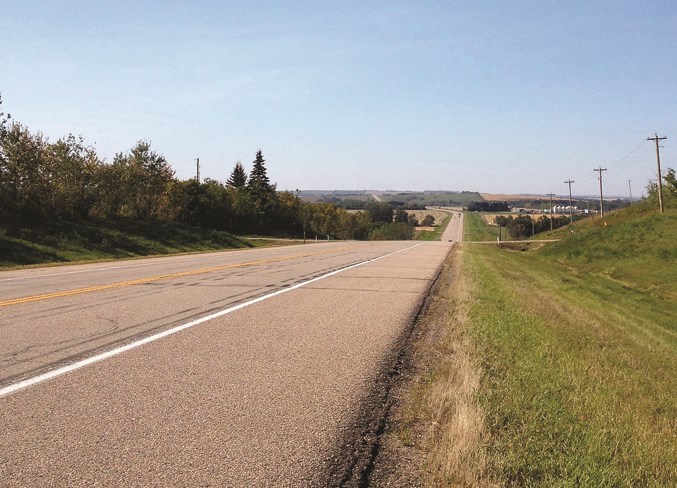“There’s no doubt about it, it made a pretty large difference.”
Ray Prevost remembers Bonnyville before Hwy. 28 become what it is today. He described a long dirt road, that took the better part of a day to travel, if you wanted to go to the city.
“We had to go through St. Paul and then Vegerville, and of course, Edmonton wasn’t exactly where it is now.
It was a much smaller city 58 years ago,” explained Prevost.
It was over 180-miles from Bonnyville to Edmonton, with most of the trip along a gravel road.
“I remember going to Edmonton with my brother, he was driving with me to stay with him for a few days, and it was a four and a half hour trip,” Prevost described.
But in 1961, that all changed. The once nearly five hour drive shortened to just shy of three, thanks to the construction of Hwy. 28. Although it was still gravel up until 1967, it was a game changer for the region.
But building the highway wasn’t easy.
In preparation for the project, they had to move a small church, which is now located next to the BonnyLodge. However, those weren’t the only changes needed in order to make Hwy. 28 happen.
“They had to split Mann Lake. At one time it was one lake, but the highway went right through,” said Prevost.
This was the creation of Upper Mann Lake and Lower Mann Lake, as it’s known today.
The highway also meant that travellers from the city, whether by car or bus, had less of a trip to make.
The once 183-mile jaunt was cut down to 144-miles.
“There’s no doubt that it made a huge difference,” Prevost expressed.
Prevost was about 15-years-old when the highway was built, but he can remember the impact it had even on the 4 Wing Cold Lake Air Force Base.
“When they started to build the base in the 1950s, the highway wasn’t there. All of the material and everything that they needed, most of it came by rail, but what came by vehicle would have a long hike. The highway really shortened the trip for them,” he described.
As people travelled the highway, popularity in the area began to grow, and businesses saw Bonnyville as an opportunity to plant some roots.
The highway is part of Canada’s National Highway System, and runs from Edmonton straight on to the City of Cold Lake. The province has committed to reviewing the highway and several intersections within the MD of Bonnyville, as they focus on improving transportation throughout Alberta.
Hwy. 28 had a huge impact on the community, connecting a small rural Alberta town to the big city.



